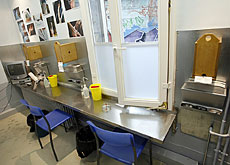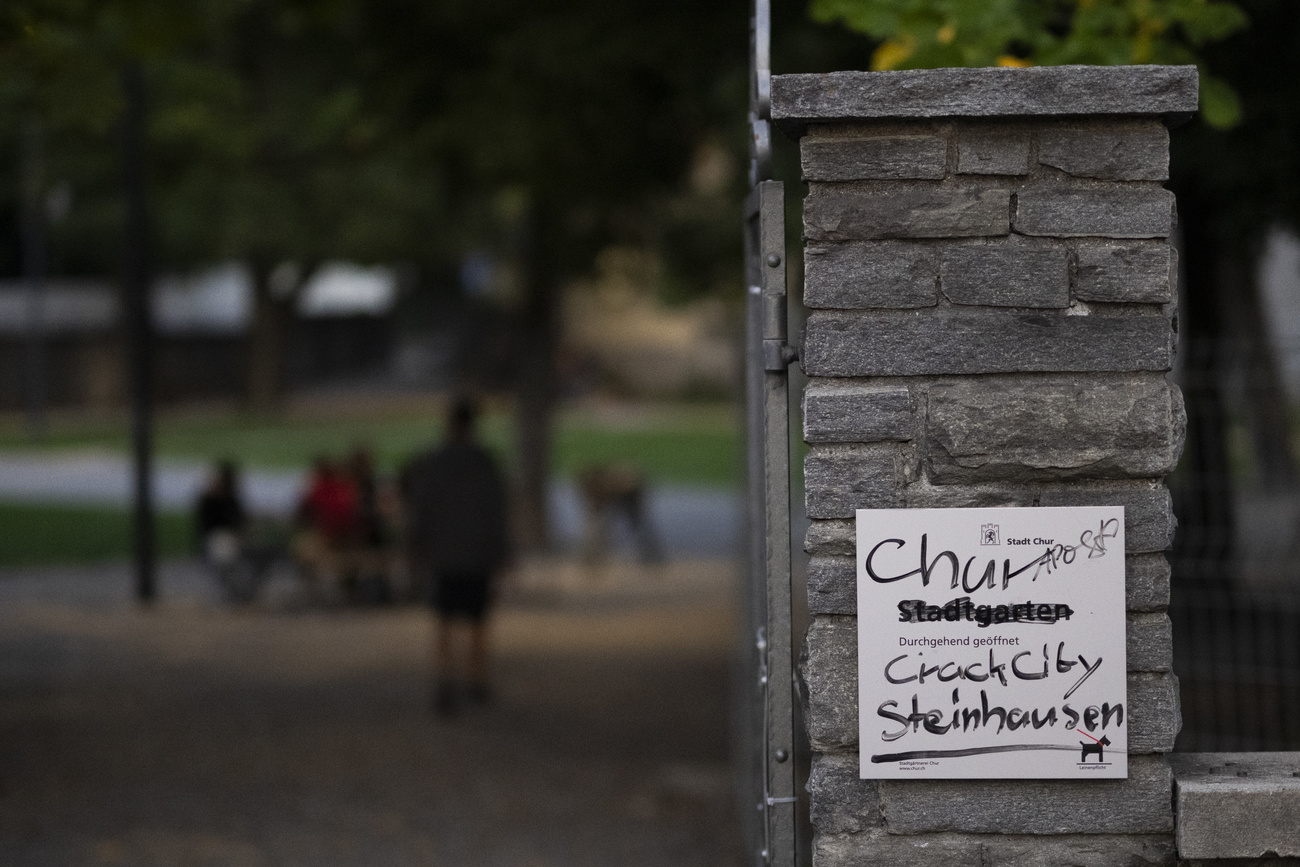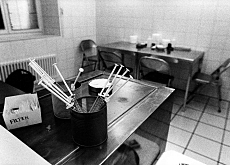Lausanne says “no” to drug injection centre

Drug prevention experts have expressed disappointment at a decision by voters in Lausanne to scrap plans for an injection room for the city's heroin addicts.
They claim similar projects in other major Swiss cities have substantially cut drug-related deaths and HIV cases.
The injection room, which was backed by the city authorities, was designed to meet the health needs of Lausanne’s estimated 1,000-1,500 heroin addicts and to counter the city’s open drug scene.
But an aggressive campaign by centre-right and rightwing opponents, who claimed the supervised facility would encourage rather than curb drug abuse, saw the proposal fail at the ballot box – much to the dismay of drug prevention specialists around the country.
The Swiss Institute for the Prevention of Drug and Alcohol Problems, which is based in Lausanne, said on Monday that it regretted the rejection of what it saw as a “sensible measure”.
“We support injection rooms in general,” spokeswoman Janine Messerli told swissinfo. “They considerably reduce health risks, such as infection with HIV and hepatitis, and they ensure medical help can be provided for urgent cases.”
Messerli also rejected arguments that an injection room would lead to more people becoming dependent on drugs, saying this had not been the experience in other Swiss towns and cities. According to the Federal Health Office, there are 13 such centres in Switzerland.
“It would not have sent out a signal of trivialising drugs; on the contrary it would have shown that there is a problem and that the community is taking care of it,” she added.
“Propaganda”
Michael Herzig, head of drug policy in Zurich, which runs four injection rooms, blamed “propaganda” and “misinformation” for Sunday’s defeat.
He said the city’s injection centres, the first of which opened in 1994, had led to a marked improvement in the health and lives of addicts.
“The death rate among drug users has dropped by two-thirds in the past ten years, and HIV infections are very low compared with the mid-90s,” he said.
“The general health condition [of drug users] is much better than during the open drug scene in the Nineties.”
Existing estimates put the number of heroin users in Zurich at 3,000-5,000, but a new survey is expected to produce a figure closer to 1,000-2,000.
Local liaison work
Herzig says another factor that has contributed to the success of operations in Zurich is regular meetings with residents living in the vicinity of injection rooms.
“There are always problems – you cannot run a facility like this without having problems such as drug users dealing in the neighbourhood or those who are not allowed inside injecting on the streets,” he explained.
“But we do a lot of work with local residents to resolve these problems. You have to give them the right information and convince them that you are taking their problems seriously. If they believe this, they will support you.”
Messerli said supporters of the Lausanne scheme had failed to get their message across to residents, whereas opponents had successfully exploited their fears.
Harm reduction
Switzerland’s success with harm reduction was highlighted last year in a study by two researchers at Zurich University, which was published in the medical journal The Lancet.
Their research showed that in canton Zurich there were 850 new heroin users in 1990 but just 150 in 2002. By contrast, the number of new heroin addicts in Britain, Italy and Australia – which have repressive drug policies – has continued to increase.
Markus Jann, head of the drugs section at the Federal Health Office, said injection rooms remained one of the most important elements of Swiss drug policy, which is based on the four pillars of prevention, treatment, harm reduction and repression.
But he noted that public opinion towards injection rooms had shifted since the 1990s when the heroin problem was more visible.
“If Lausanne today says ‘no’ to an injection room that’s an expression of this development,” said Jann. “Also in the French-speaking part of the country they traditionally focus more on the repressive elements than harm reduction.”
swissinfo, Adam Beaumont
Nearly 25,000 heroin addicts live in Switzerland.
Two out of three users are in treatment programmes.
14,500 addicts are being treated with methadone, 1,300 with heroin and 500 with buprenorphine.
In the late 1980s and early 1990s Switzerland had one of the highest rates of heroin addiction in Europe and a faster-than-average spread of HIV.
Many addicts were sharing needles at the notorious open drug scenes in cities such as Zurich and Bern.
In 1991 Switzerland launched a new strategy, based on the four pillars of prevention, treatment, harm reduction and repression.
Since then, various harm reduction strategies have been developed: heroin prescription programmes, needle exchanges and injection rooms.
The open drug scene began to be dismantled in the mid-1990s. Thanks in part to the new programmes, heroin use is declining and the mortality rate has been halved.

In compliance with the JTI standards
More: SWI swissinfo.ch certified by the Journalism Trust Initiative










You can find an overview of ongoing debates with our journalists here . Please join us!
If you want to start a conversation about a topic raised in this article or want to report factual errors, email us at english@swissinfo.ch.